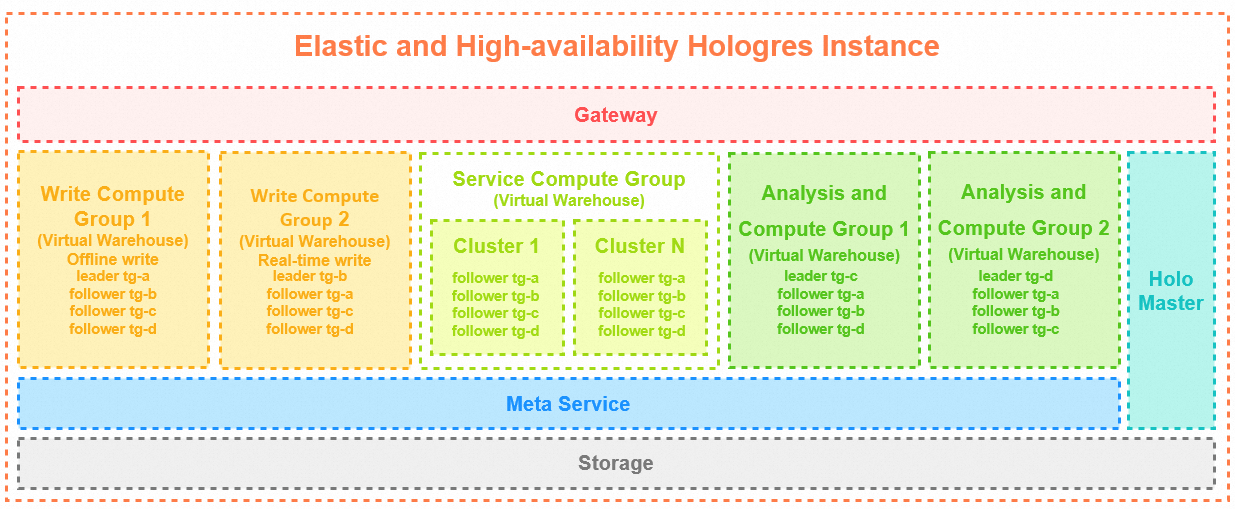Hologres V2.0 introduces virtual warehouse instances as a new type of instances. You can use a virtual warehouse instance to implement read/write splitting. This topic describes the architecture of virtual warehouse instances.
Background information
Hologres V1.1 supports the multi-instance high-availability deployment mode in which storage resources are shared among instances. A primary instance can be associated with multiple read-only secondary instances. The primary instance and all its secondary instances share storage resources, but their computing resources are isolated. This ensures read/write splitting and implements multi-instance high-availability deployment. For more information, see Configure read/write splitting for primary and secondary instances that share storage.
However, in this mode, you need to create multiple instances and configure an independent endpoint for each instance. To resolve this issue, Hologres V2.0 introduces virtual warehouse instances as a new type of instances to provide computing resources. Virtual warehouses are independent of each other and scalable. You can create virtual warehouses based on your business requirements and scale out or scale in computing resources in virtual warehouses. Data and metadata are shared among virtual warehouses. Virtual warehouse instances provide core capabilities such as resource isolation and scaling and are suitable for scenarios of read/write splitting, resource isolation, and business isolation.
Usage notes
You can create up to 10 virtual warehouses in a virtual warehouse instance. Each virtual warehouse can have a minimum of 32 compute units (CUs) and a maximum of 512 CUs.
Architecture
The following figure shows the architecture of virtual warehouse instances.

Core components related to a virtual warehouse instance:
Data storage: Hologres data storage is built on top of Apsara Distributed File System and offers advantages of high performance, high reliability, high availability, low cost, elastic storage space, and robust stability and security.
Virtual warehouse: Virtual warehouses provide independent, elastic, and scalable computing resources that are used to process query requests.
Cloud service components: Cloud service components include gateways, Meta Service, and Holo Master and provide capabilities such as metadata management, security authentication management, unified access management, and node management. Gateways are used to forward connections to different FE nodes on virtual warehouses. For example, if the virtual warehouse
read_warehouseis required, a gateway can forward connections to an FE node on the virtual warehouseread_warehouse. A gateway can forward up to 100 connections per second to FE nodes on virtual warehouses. In Hologres V2.2.22 and later, the number can be increased to 150 connections per second.